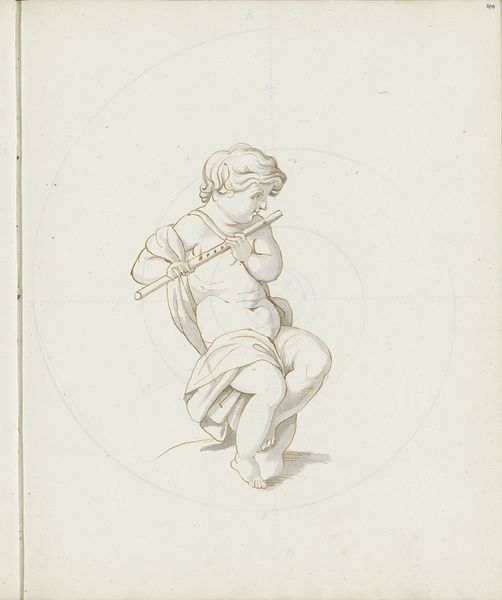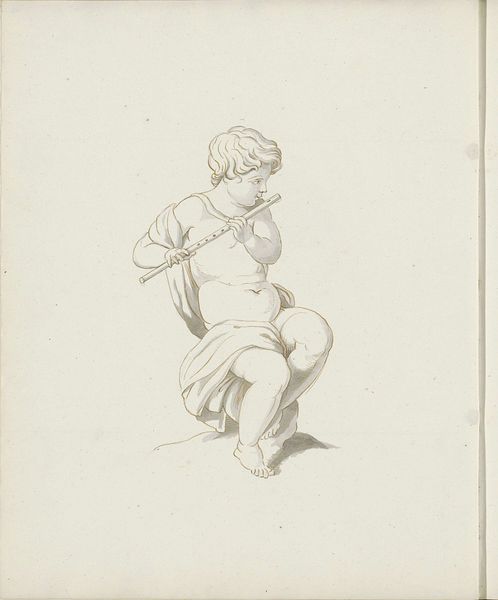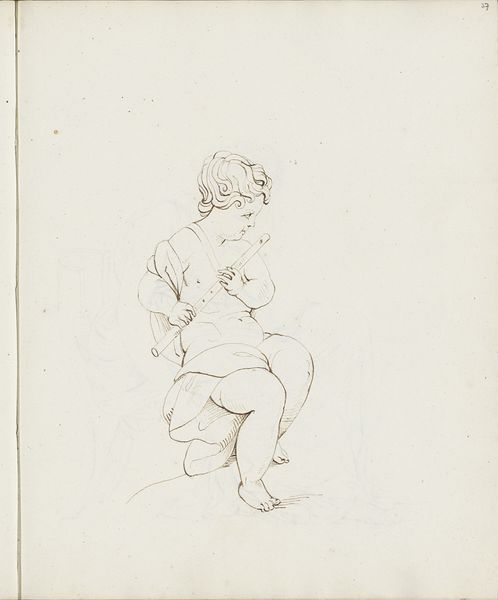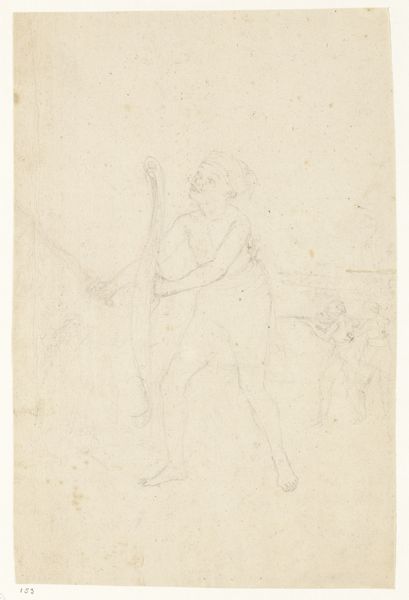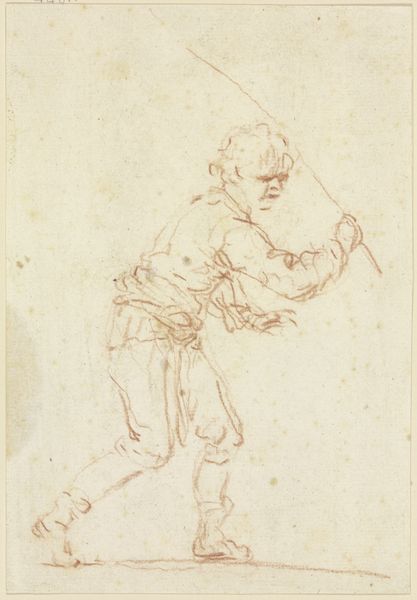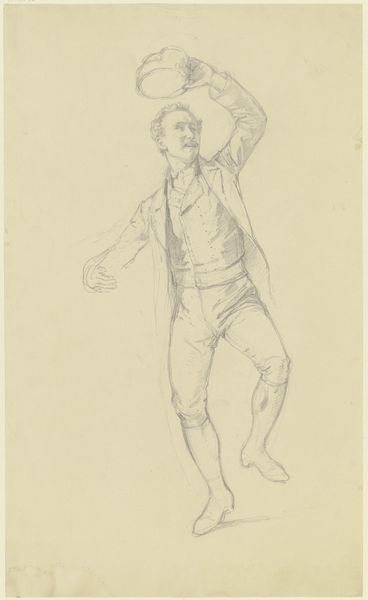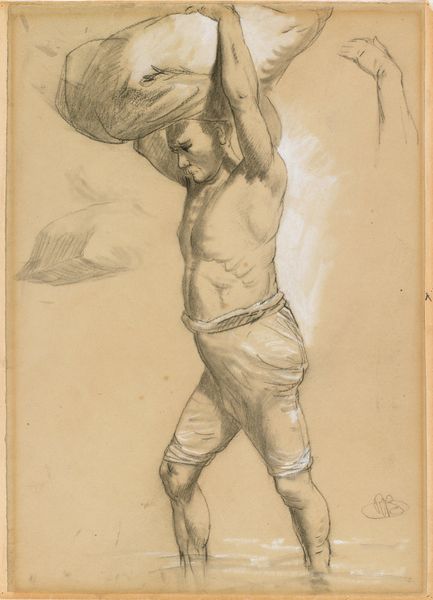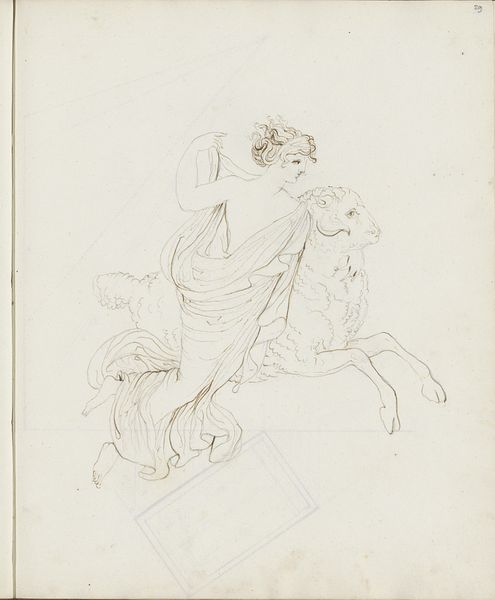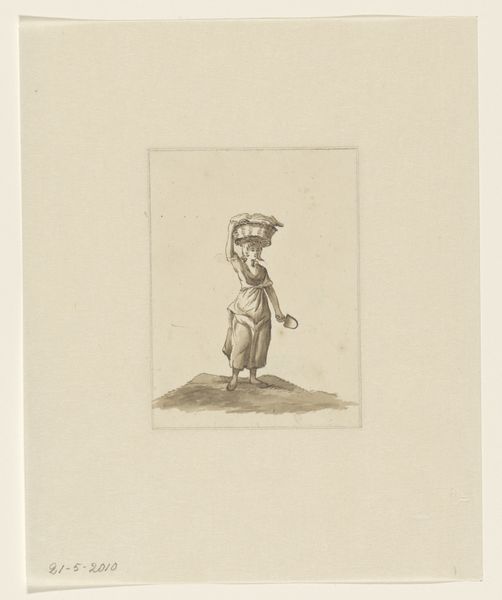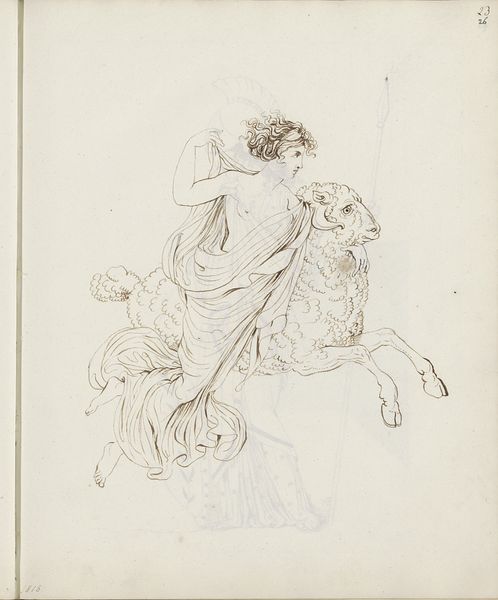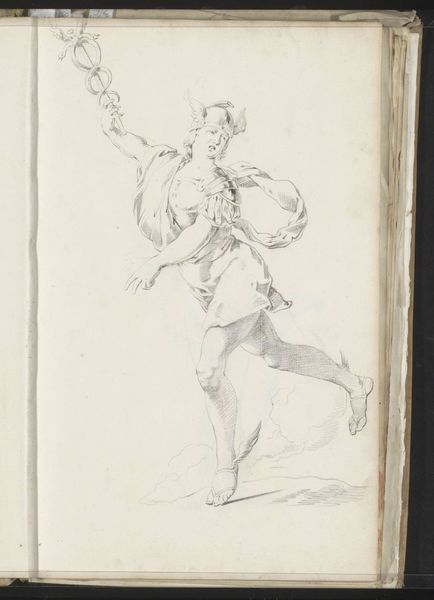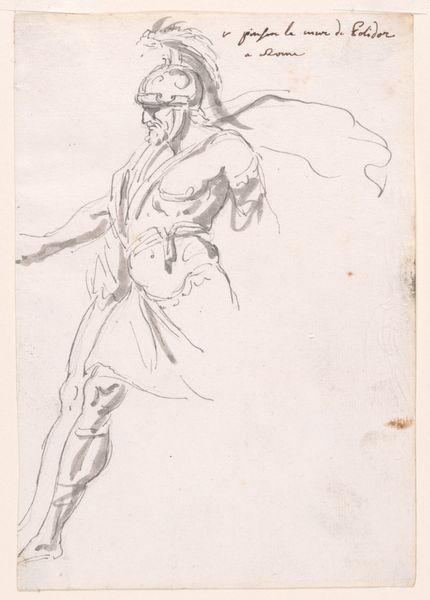
drawing, pencil
#
drawing
#
amateur sketch
#
imaginative character sketch
#
neoclacissism
#
light pencil work
#
pencil sketch
#
figuration
#
personal sketchbook
#
idea generation sketch
#
character sketch
#
ink drawing experimentation
#
pencil
#
sketchbook drawing
#
genre-painting
#
nude
#
fantasy sketch
Copyright: Rijks Museum: Open Domain
Editor: Here we have "Putto met een triangel," or "Putto with a Triangle," a pencil drawing from between 1816 and 1852. The soft lines give it a delicate, almost dreamlike quality. What social commentaries, if any, resonate within this depiction of a seemingly innocent mythological figure? Curator: This work invites us to consider the artistic conventions and societal expectations surrounding innocence, the nude, and class. Neoclassicism often romanticized antiquity, using idealized forms to convey moral virtue and political stability. However, by focusing on a putto – a symbol frequently associated with eroticism – what ideological tensions emerge? Is this merely an aesthetic exercise, or does it subtly challenge prevailing norms about gender roles and power dynamics by visualizing this character in Kemper's personal sketchbook? Editor: That’s a very interesting take. I hadn't considered the possible tensions. The erotic association with putti, viewed through the lens of societal expectations and morality, brings a layer of complexity. Curator: Precisely. Consider also Kemper’s gender and aristocratic background. How might her social positioning influence her choice of subject matter and style? Is she consciously engaging with contemporary debates on aesthetics and morality, or is she simply following artistic trends while using the opportunity for a little "ink drawing experimentation?" Editor: It makes me wonder what the artistic climate looked like for women artists at this time, and if themes around morality and class consciousness had to be communicated subtly. Curator: Absolutely! This sketch becomes a portal to broader conversations about art as a reflection of social structures, inviting critical interrogation of the artwork. Editor: Thank you; it’s fascinating how a simple drawing can reveal complex cultural narratives. Curator: Indeed. Art often functions as a mirror reflecting not just the world but also the artist's position within it.
Comments
No comments
Be the first to comment and join the conversation on the ultimate creative platform.
